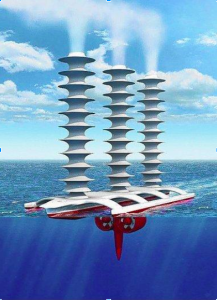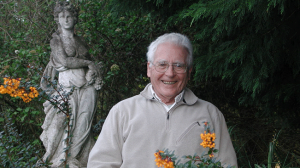A $1.5 million machine, a small aircraft, and a bunch of ex–ski bums traipsing about in the woods could be the key to a well-irrigated future.
March 21, 2014 By Vince Beiser Vince Beiser has reported from more than two dozen countries for publications including ‘Wired,’ ‘Harper’s,’ ‘The Atlantic,’ and ‘Rolling Stone.’ He is the winner of the 2014 Media for Liberty Award. ___ Here’s something to add to your doomsday list of natural resources that people need to survive but are threatened by climate change: snow. coque iphone 8 It’s a key source of freshwater for more than 1 billion people across the globe, slaking thirst, irrigating croplands, and driving turbines that generate electricity. Conveniently, in much of the world, snow also acts as a natural reservoir, storing water during wet seasons, then rationing it out slowly during drier summer months. But today, growing populations, warming temperatures, and changing weather patterns are straining that supply like never before. “June is the new July,” says Auden Schendler, vice president of sustainability at Aspen Skiing Company in Colorado. “Snowmelt comes earlier than it used to, and it all happens in one big flood.” Which means that knowing exactly how much snow is in the highlands—and when it’s coming down to lower elevations to feed rivers, aqueducts, and irrigation channels—is ever more important. outlet coque iphone But how do you measure something that’s spread over thousands of miles of steep, rugged, alpine terrain? Tom Painter, a research scientist at NASA’s Jet Propulsion Laboratory, has an answer: by measuring snow from thousands of feet in the air. Using sophisticated, aircraft-borne sensors that gauge snow’s depth and the amount of light it reflects, Painter and his team are assembling the most accurate measurement ever made of just how much water the mountains hold. This is welcome news in California, where the water content of accumulated snow is at historically low levels. Runoff from the Sierra Nevada mountains provides about a third of the entire state’s water, and up to 80 percent in some areas, supplying tens of millions of people and almost 1 million acres of farmland. Painter can’t make it snow, but he can provide more and better data to water managers, who need to plan how to most efficiently fill their reservoirs; farmers deciding which crops to plant and when; and cities trying to figure out if they’ll have enough water to supply their residents—or will need to start rationing. “The demand for knowledge about water resources is at an all-time high,” says Painter, a gregarious, athletically built 46-year-old. For decades, state water officials have estimated the snowpack’s water content by a straightforward method that will appeal to steampunk aficionados: They clamber into the mountains on snowshoes and stick aluminum tubes into the snow. The tubes indicate depth while collecting a sample revealing water volume. More recently, California has added a network of tabletop-size scales scattered through the mountains that electronically transmit the weight of snow that has fallen on them. coque iphone xs max Both systems yield reliable measurements but only of the snow where the measurement is taken; extrapolating out from that to a whole basin, or a whole mountain range, is better than guesswork but less than precise. What’s more, both the scales and the human surveyors are concentrated at lower elevations, leaving scientists to wonder what lies farther uphill. “The old system worked OK historically because there was always enough water,” says Painter. “But now it’s all been allocated out, and demand is starting to exceed supply.” With a wide, toothy smile, an open-collared shirt, and stylishly-frayed-at-the-cuffs jeans, Painter comes across more like an enthusiastic backcountry guide than a Ph.D. who’s been published in top research journals. There’s a reason for that: Growing up in Fort Collins, Colo., he says, he always felt at home in the mountains—so much so that he dropped out of college twice to be a ski bum. “The problem was that I had to be in the mountains, but I also had to use my brain,” he says. “I’m so lucky to have found this job.” (Many on Painter’s team tell similar stories of finding a way to turn a passion for wilderness into a respectable profession.) Painter’s project, dubbed the Airborne Snow Observatory, is a three-year, $4 million trial funded by JPL and California’s Department of Water Resources. On a recent morning at JPL’s tree-lined campus northeast of downtown Los Angeles, the project’s white-walled lab was strewn with gear being readied for the next batch of flights: two-way radios, boxes of tools, and a desk-size metal frame that will be attached to a little Twin Otter plane to house the project’s two key remote sensing instruments. The first is a lidar system—a gizmo similar to radar that uses light instead of sound, shooting out as many as 800,000 pulses a second to measure the elevation of the terrain beneath the plane. Those readings are then compared with lidar measurements taken of the same area during the snow-free summer to figure out the snow’s current depth. The second is a spectrometer, which measures the snow’s reflectivity, or albedo, to gauge how much sunlight the snow is absorbing, a key indicator of how fast it will melt. coque iphone soldes In flight, the plane is tracked by GPS and an accelerometer to align its measurements precisely with a geographical position. “We get about a terabyte of data from each flight,” says Painter. coque iphone 8 Painter’s team is focusing on Colorado’s Uncompahgre River Basin, part of the huge Colorado River Basin that supplies water to much of the Western United States, and California’s Tuolumne River Basin in the Sierra Nevada, which feeds the Hetch Hetchy Reservoir, the primary water supply for 2.6 million people in the San Francisco Bay Area.
The Unexpected Way Beer Is Helping a Calif. soldes coque iphone Town Get Through a Historic Drought
NASA is calling the results the most accurate measurements ever of the water content of snowpack. Last spring, managers of the Hetch Hetchy Reservoir used Painter’s data to help figure out optimal flows for generating the hydroelectric power that runs much of San Francisco’s public transportation system, and for keeping the reservoir filled. The ASO, says Jeff Dozier, the founding dean of the Bren School of Environmental Science & Management at UC Santa Barbara, where Painter got his Ph.D., “gives us a very good measurement of the properties of snow. It’s a really systematic set of observations that are not easy to measure over the spatial scales of mountain ranges. Everybody is pretty excited about it.” Measuring snow from the air isn’t an entirely new concept. The National Weather Service has been doing it for some 30 years, using airplane-mounted sensors that record gamma radiation levels emitted from a given piece of ground when it’s clear and when it’s covered in snow, a difference that can be used to calculate the snow’s depth with great accuracy. That works well in the eastern part of the U.S., says Andrew Rost, director of the NWS’s National Operational Hydrologic Remote Sensing Center, but not in high mountains like the Rockies or the Sierra. “Out West, the snow is so deep that it blocks the gamma radiation completely,” Rost says. coque iphone xr “And our planes need to fly just 500 feet above the ground. You can’t do that in steep mountains.” If the ASO proves reliable, Rost says, “it would be a huge step forward.” One of the project’s most important findings is the crucial role of dust. Mountain bikes, ATVs, resource extraction, road building—all that and more across the West and as far away as China has contributed to the atmosphere in the Rockies containing seven times more dust than when settlers arrived from the East Coast in the 19th century. “Until recently we assumed the albedo of snow stayed constant,” says Painter. “But now we’re learning there’s a huge range.” Concentrations of factories and highways near mountains can have a major impact on the timing of snowmelt. That’s why half of Painter’s lab is taken up with a walk-in freezer full of ice and snow samples from around the world, and machines for measuring the concentrations of particulates they hold. The American West is hardly the only place facing serious water worries. A 2012 report by the National Intelligence Council warns that “during the next 10 years, many countries important to the United States will experience water problems—shortages, poor water quality, or floods—that will risk instability and state failure [and] increase regional tensions.” Tens of millions of people depend on meltwater from the Andes, as do hundreds of millions on waters flowing from the Himalayas. Nuclear-armed archrivals India and Pakistan are quarreling over rights to the waters of the Indus River, which is seeing reduced flows thanks in part to declining snowmelts. Meanwhile, tensions run high among Turkey, Syria, Iraq, and Iran over the snowpack-fed Tigris and Euphrates rivers. “If we can put together the remote sensing infrastructure that tells us what’s going on with snowmelt in the Western U.S.,” Painter says, “we can migrate the technology around the globe, because the regions of water stress—the Himalayas, the Hindu Kush, the Kazakhstan-China border, the Andes—are all at the intersection of mountains and desert, just like here in the U.S.” Painter says he’s been contacted by water officials in several foreign countries interested in trying out his technology, and he hopes to start a pilot project in one of them soon—he won’t say where. In the meantime, he’s aiming to expand beyond the Tuolumne basin to cover the entire Sierra Nevada. “The information we have on our snowpack here is the envy of the world, but it’s actually pretty sparse,” says Painter.
 Climate Engineering No Longer Pie in the Sky
Climate Engineering No Longer Pie in the Sky